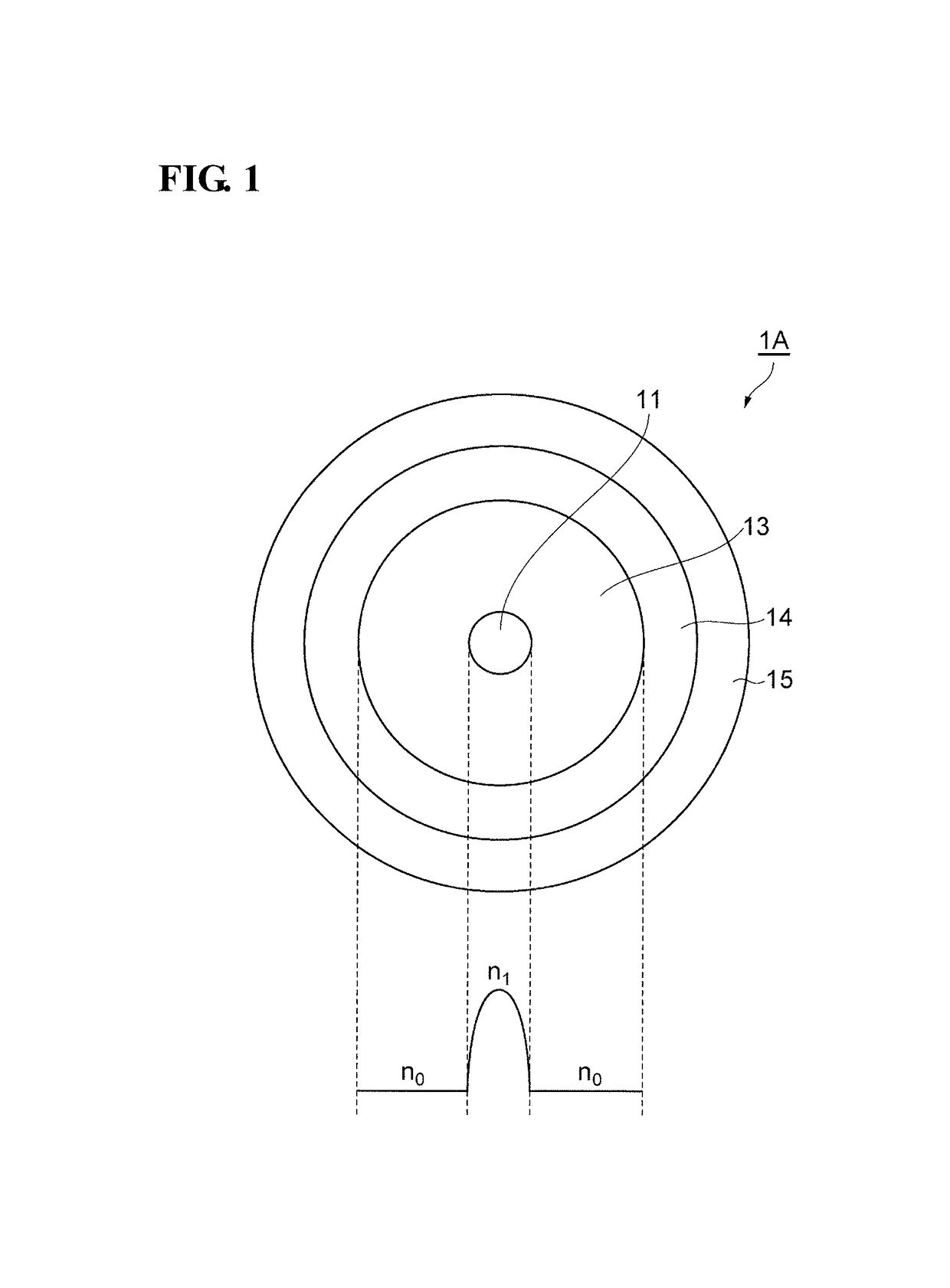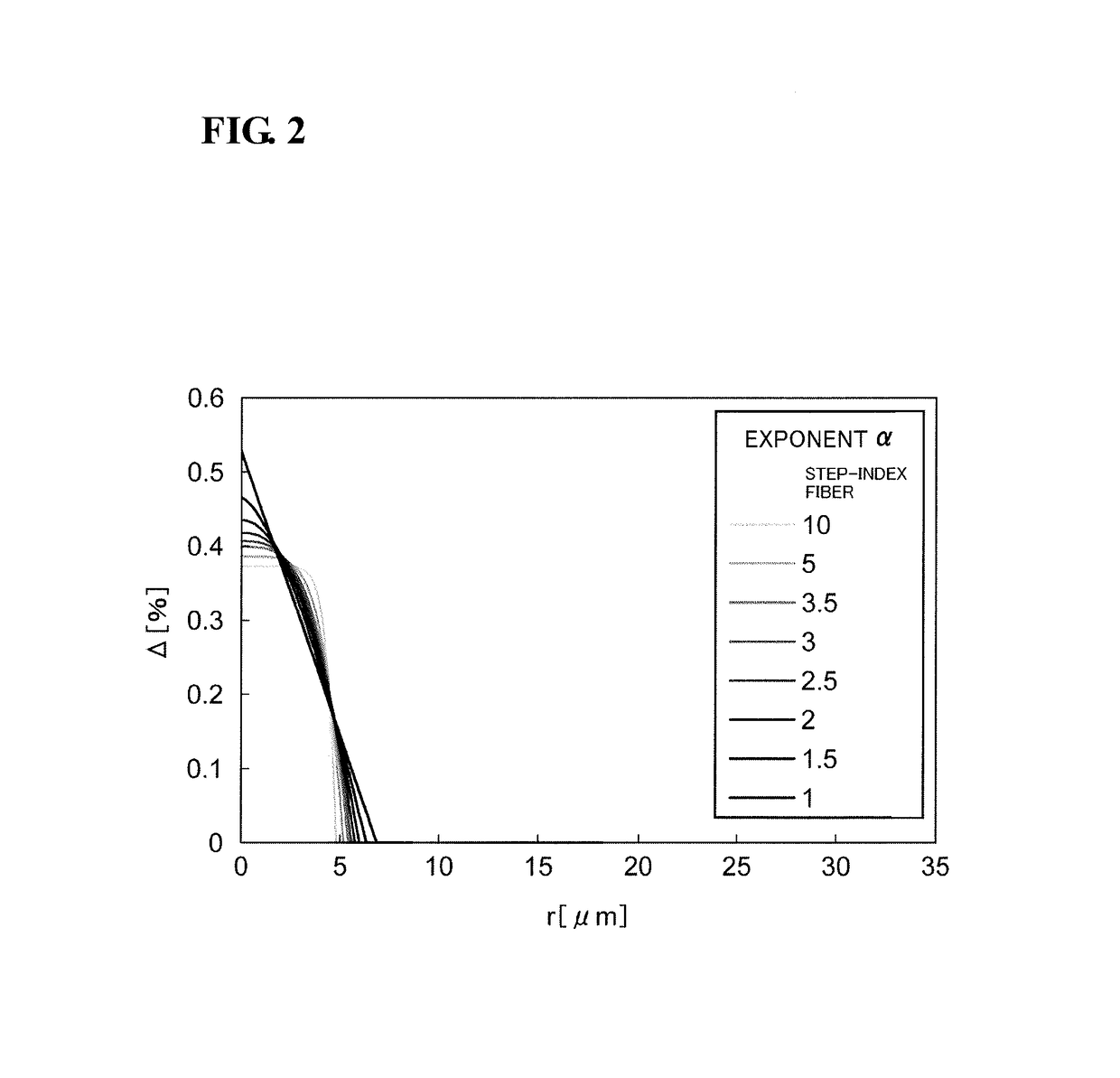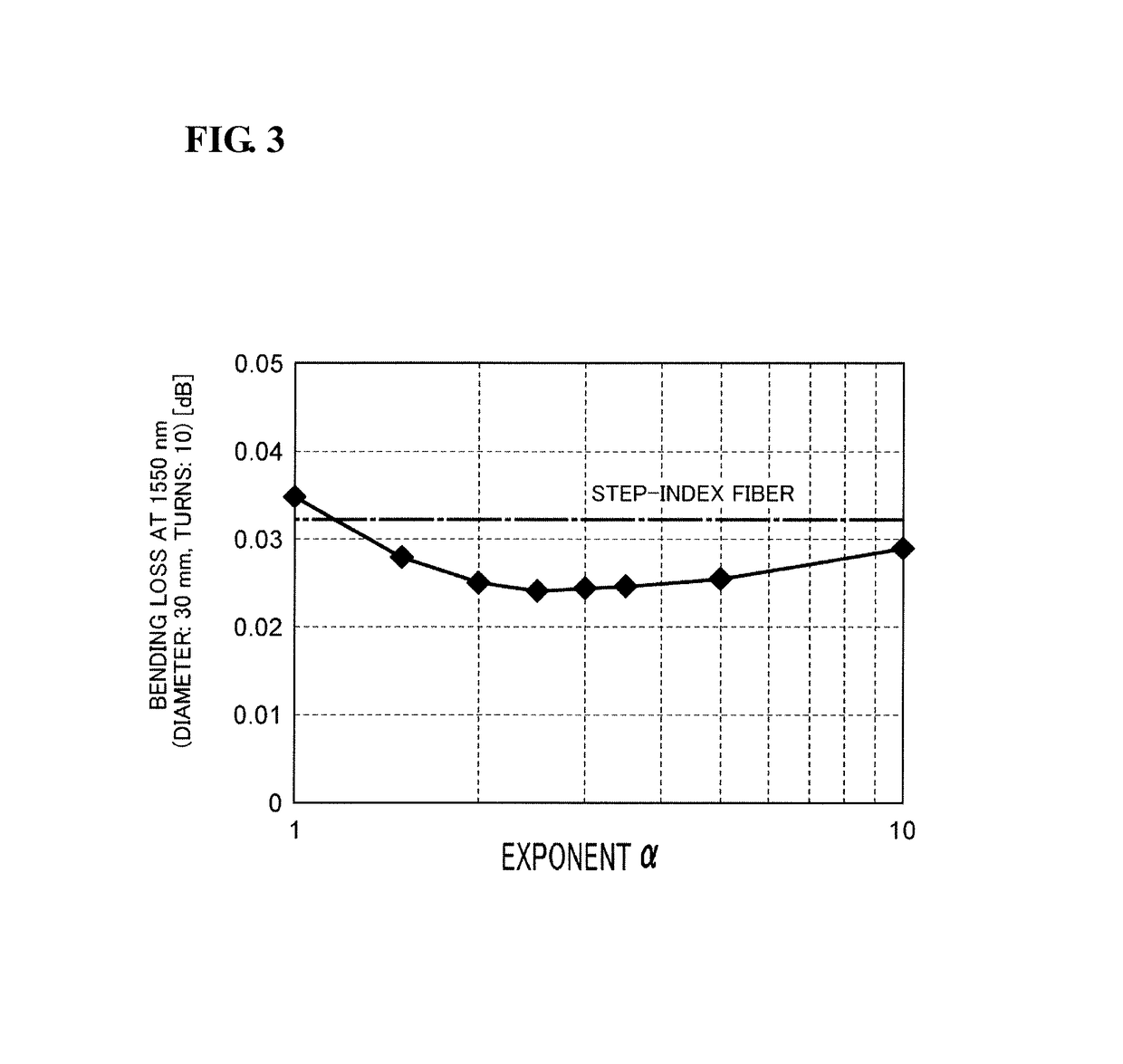Optical fiber
a technology of optical fiber and fiber core, applied in the field of optical fiber, can solve the problems of increasing the fusion-splicing loss, and reducing the mfd of optical fiber, and achieving the effect of small bending loss
- Summary
- Abstract
- Description
- Claims
- Application Information
AI Technical Summary
Benefits of technology
Problems solved by technology
Method used
Image
Examples
first embodiment
[0031]FIG. 1 is a conceptual diagram illustrating a cross section and the radial refractive-index profile of an optical fiber 1A according to a first embodiment. The optical fiber 1A includes a core 11 and cladding 13 provided around the core 11. The core 11 has a maximum refractive index n1. The cladding 13 has a refractive index n0 that is lower than n1. The core 11 is made of silica glass containing GeO2, and the cladding 13 is made of pure silica glass, for example.
[0032]A radial refractive-index profile n(r) of the optical fiber 1A is approximated with an exponent α as Expression (1):
[0033]n(r)={n1[1-2Δ1(ra)α]12(0≤r≤a)n0(r≥a)(1)
where r denotes the radial distance from the center of the core 11, a denotes the radius of the core 11, at which the refractive index n(r) becomes equal to the refractive index n0 of the cladding 13, and Δ1 denotes the relative refractive-index difference between the center of the core 11 where the refractive index is largest and the cladding 13. Th...
second embodiment
[0041]FIG. 6 is a conceptual diagram illustrating a cross section and the radial refractive-index profile of an optical fiber 1B according to a second embodiment. The optical fiber 1B includes a core 11, a depressed portion 12 provided around the core 11, and cladding 13 provided around the depressed portion 12. The core 11 has a maximum refractive index n1. The cladding 13 has a refractive index n0 that is lower than n1. The depressed portion 12 has a refractive index n2 that is lower than both n1 and n0. The core 11 is made of silica glass containing GeO2, the depressed portion 12 is made of silica glass containing F, and the cladding 13 is made of pure silica glass, for example.
[0042]A radial refractive-index profile n(r) of the optical fiber 1B is approximated with an exponent α as Expression (3):
[0043]n(r)={n1[1-2Δ1(ra)α]12(0≤r≤a)n2(a≤r≤b)n0(r≥b)(3)
where r denotes the radial distance from the center of the core 11, a denotes the radius of the core 11, at which the refractiv...
examples
[0055]FIG. 15 is a table summarizing relevant factors of Fibers 1 to 8 according to examples. FIG. 16 is a table summarizing relevant factors of Fibers 9 to 15 according to other examples. The factors summarized in these tables are as follows, in order from the top: the exponent α, the relative refractive-index difference Δ1 at the center of the core 11, the relative refractive-index difference Δ2 of the depressed portion 12, a core diameter 2a, an outside diameter 2b of the depressed portion 12, the ratio (b / a), the zero-dispersion wavelength, the MFD at a wavelength of 1310 nm, an effective cross-sectional area Aeff at a wavelength of 1310 nm, the MFD at a wavelength of 1550 nm, an effective cross-sectional area Aeff at a wavelength of 1550 nm, the fiber cutoff wavelength λc, the cable cutoff wavelength λcc, the difference (λc−λcc), the MAC value, and the bending loss at a wavelength of 1550 nm for the optical fiber 1B wound by ten turns with a bend diameter of 30 mm.
[0056]Fibers ...
PUM
 Login to View More
Login to View More Abstract
Description
Claims
Application Information
 Login to View More
Login to View More - R&D
- Intellectual Property
- Life Sciences
- Materials
- Tech Scout
- Unparalleled Data Quality
- Higher Quality Content
- 60% Fewer Hallucinations
Browse by: Latest US Patents, China's latest patents, Technical Efficacy Thesaurus, Application Domain, Technology Topic, Popular Technical Reports.
© 2025 PatSnap. All rights reserved.Legal|Privacy policy|Modern Slavery Act Transparency Statement|Sitemap|About US| Contact US: help@patsnap.com



